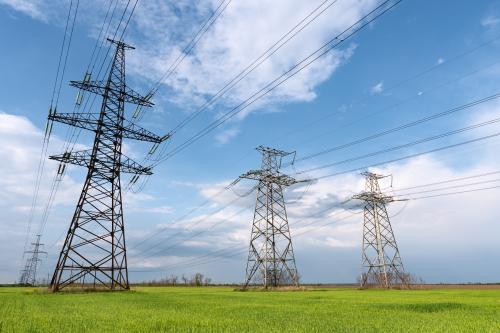The latest foray towards ensuring India’s energy security, the Turkmenistan-Afghanistan-Pakistan-India (TAPI) pipeline, is a welcome move. The signing of the TAPI deal has taken an eternity. That’s not surprising since alignment of the three “Ps” – politics, proximity and pipelines – critical to the gas market, is time-consuming. The TAPI deal helps to partially, but not fully, complete a vital component of the energy jigsaw: secure energy from multiple geographies to diversify supply risk; for India, Qatar represents a disproportionate share at over 80 per cent. TAPI opens up a ten million metric tonnes per annum (MMTPA) gas corridor, although it is at the cost of the pipeline passing through two conflict-ridden countries, one of which is openly hostile to India — supply disruption is within the realm of possibility; given limited capacity for storage (much like electricity), the consequent potential loss to downstream businesses in India can be large. According to the agreement, gas will be available to India from 2018 onwards at an expected landed cost of $13/per million British thermal unit (mmBtu). On a take-or-pay basis, the associated – directly or indirectly guaranteed – contingent liabilities are large.
Despite the TAPI deal, given India’s dire domestic gas supply situation, it is expected that a shortfall of up to 40 to 50 per cent of demand will need to be met by imported liquefied natural gas (LNG). Before the end of the decade, India will be among the largest LNG importers in the world. Concomitantly, significant regasification infrastructure is either being constructed or being planned, with indications that as much as 30 to 35 MMTPA capacity could come on line in the next few years. Much of the incremental capacity is yet to tie up LNG supply linkage, and thus will be hostage to the prevailing spot markets for both volumes and prices.
One can safely assume that a significant part of this capacity would look to long-term contracting to mitigate (price) volatility; the implication is that deals for an additional 90 to 100 million standard cubic metres per day of LNG at a lifetime value of almost $500 to $600 billion should be in the offing over the next few years, and some are already under negotiation.
Developments in the gas sector in recent years underscore the importance of incorporating elbow room in contractual structures. Consider the following, possibly game-changing, sources of uncertainty for India and others, whose effects are still to fully work their way through the international gas market. First, the dynamic in the evolution of shale gas exports to countries outside the North American Free Trade Area that the US Department of Energy will calibrate. Second, supply from emerging shale geographies such as China, Mexico and South America. Third, the amount and cost of deep sea off-shore finds, for example in Australia. Fourth, since demand for gas, like for any other energy source, is a derived demand, it is subject to the vicissitudes of global growth, and key gas consumers (like the euro zone). Fifth, the likelihood of complete replacement of nuclear energy in Japan with alternative fuels. Sixth, industrial customers for gas, including fertiliser plants and power generators, in India will also have to manage marked rupee currency risk in the light of recent sharp fluctuations. Seventh, the changing correlation between oil benchmarks and Asian LNG landed cost.
While the economic rationale of a long-term contract is obvious enough, caution is warranted. In a gas-starved situation, it is easy to overlook the hidden perils that players can be exposed to. The value – and consequently value at risk – of a long-term contract in gas is critically dependent on the specific terms and conditions related to price, volume, flexibility and review mechanisms, as follows:
- Contracts can allow for negotiating both specific formulae and scope for indexation (JCC, Henry Hub, oil products, Brent, local hub prices, etc), which would help identify the necessary risk-hedging mechanisms.
- The capacity to make well-thought-out estimates of requirements in a supply-starved market may not seem critical, but examples of several European countries that have gone from starved to sated should impress upon us the importance of careful assessments of volume and frequency of requirements.
- Flexibility clauses include those that allow for significant range in volume, destination and the rules that govern the consequent value split.
- Embedded price reviews can help “reset” the fairness of the contract. Neither the seller nor the buyer is privy to the way the energy world may look in the future, hence flexibility for readjustments triggered by specific events is essential “insurance”.
All four sets of clauses need to be considered together to ensure consistency. A prudent approach to managing risks associated with volatility of “demand” in markets mandates that the terms and conditions of the supply contract adequately compensate for the entailed risks. A long-term contracting strategy, with all its inherent a priori “benefits”, will only deliver overall life-cycle gains when the objective of fuel security is combined with an apposite view of risk hedging.
Some exposures faced by buyers in India can be better managed if an India-oriented LNG price “marker” evolves. Thus far, India has been a passive price taker, specifically, at the high end of LNG prices contracted by Korea and Japan, countries that pay a hefty reliability premium but that are easily able to absorb the elevated cost on account of energy-efficient industrial processes and structures. In this context, it is instructive that China is a preferred customer — on a weighted average basis, it pays a lower price for imported gas compared to practically all other buyers in Asia.
In conclusion, a capacity to delve into the details of the contract structure, simulate different scenarios, draw insights from potential outcomes and hedge the relevant risks associated with long-term contracts has the potential to engender either a gas bonanza or a gas problem. The devil is in the details.



Commentary
Op-edMore Elbow Room in Gas Contracts
June 22, 2012